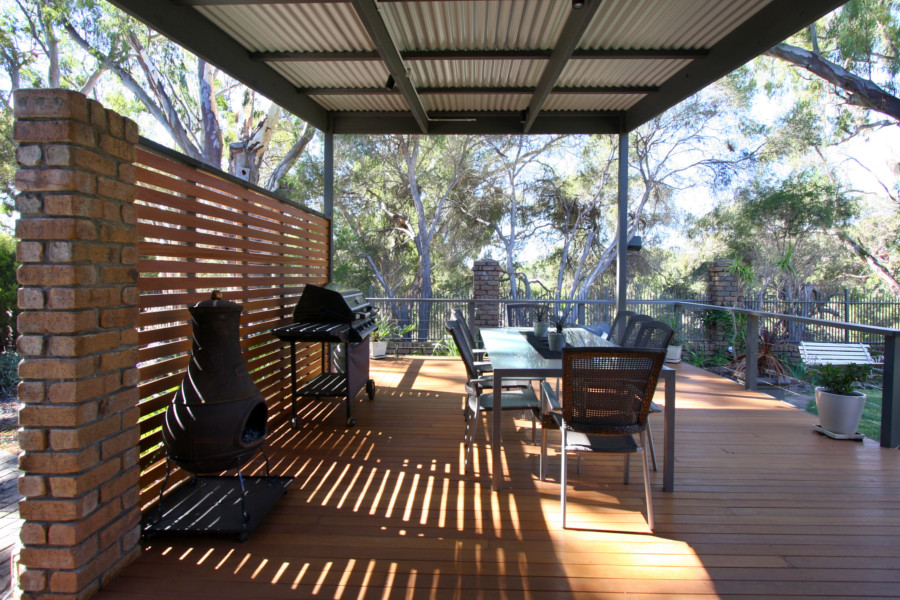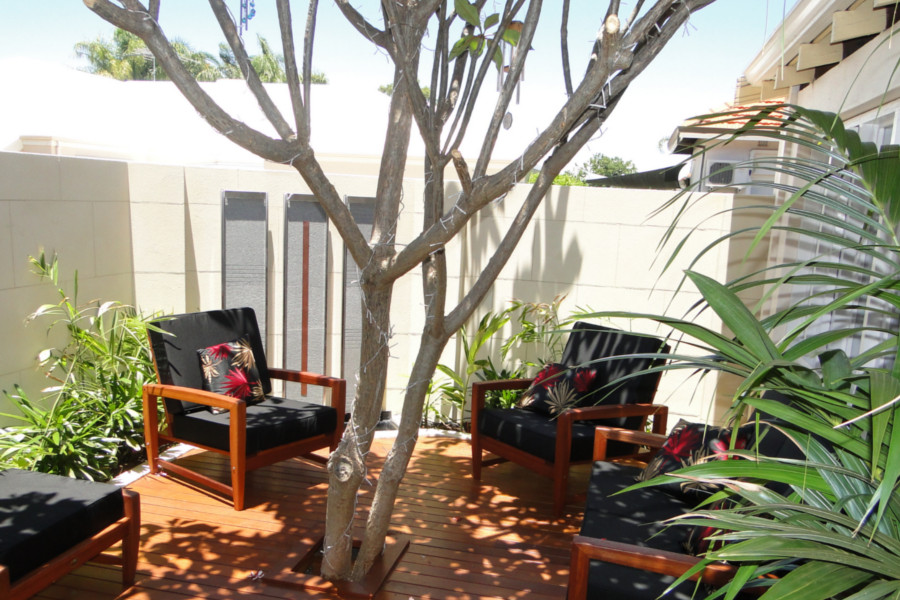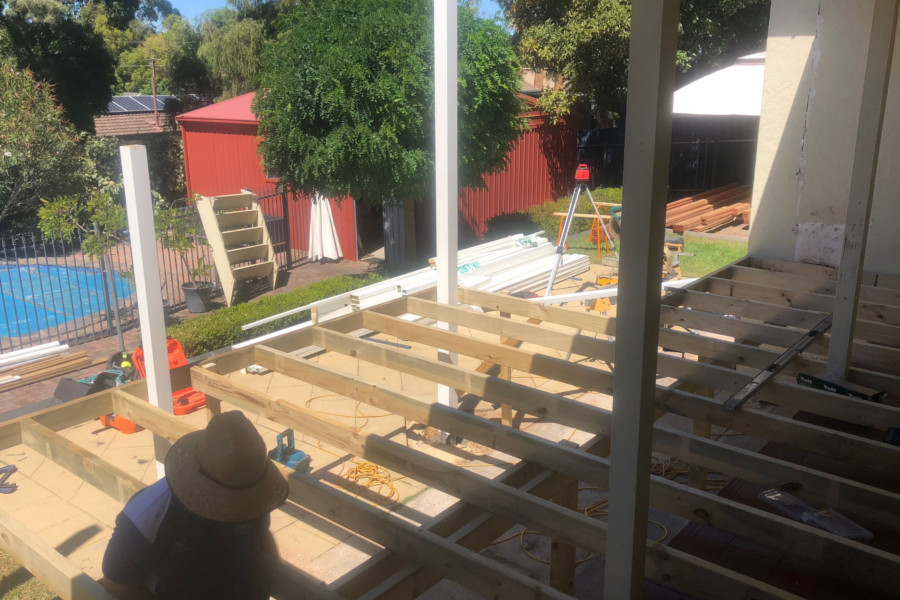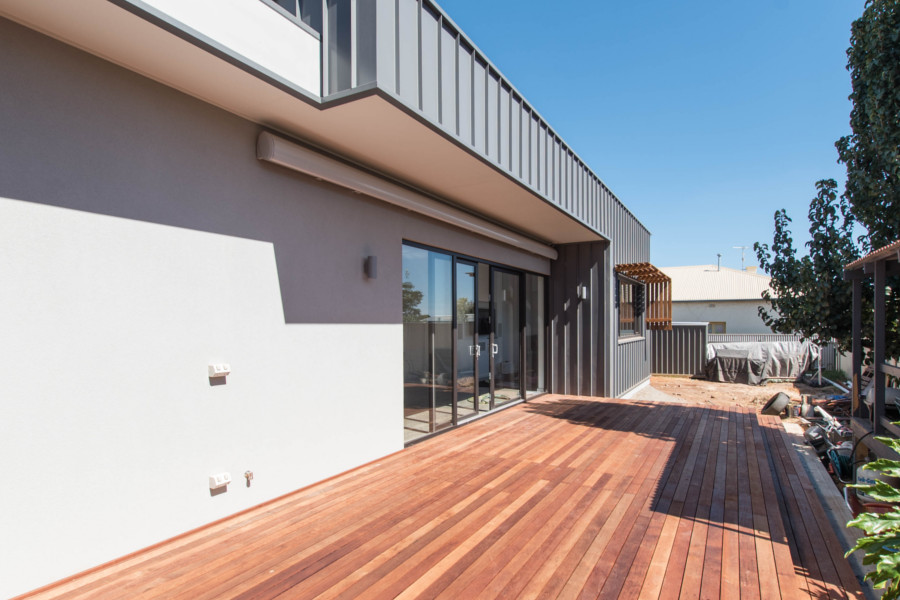
Each season possesses its own particular charm and each one prescribes its own way of relating to and enjoying the outdoors. But there is a way you can experience all four seasons comfortably and enjoyably underneath your pergola.
Although a pergola may sometimes be nothing more than barely a roof over your head, with no walls, no doors, no windows — with nothing else, in fact — it does quite effectively serve to filter what can sometimes be the harshness of the outdoors. And with a bit of imagination and some design savvy the pergola transforms into the ultimate outdoor living space for you. Here you can enjoy the fresh and free outdoors whilst still tethered to the comfort and safety of your home.
Winter In A Pergola
Winter is often the time of year when people would rather stay indoors. Especially in South Australia where winters can get pretty cold, it’s hard to trade off the warmth of a living room fire with the stingy chilliness offered by a typical winter’s morn. And here’s where the pergola comes to the rescue.
A roofed pergola keeps you dry when there’s a bit of rain. Clear or polycarbonate roofing still lets the sunlight in, so you don’t have to endure the gloom during the winter solstice. Though the days may be shorter during this time of the year, you’ll still get to enjoy as much of it as you can. And when the sun does set, lighting lets you and your guests continue to enjoy time out in the pergola even until late in the evening.
Wind chill is a reality so a pergola with privacy screens or blinds installed helps minimise the unpleasantness.These screens provide a barrier against the wind, but still allow air to freely ventilate into the structure. As further protection from the cold you can build a fireplace or a fire pit, or simply bring along one of those portable electric heaters.
The Pergola In Spring
The late great Robin Williams once remarked that “spring is nature’s way of saying, ‘Let’s party!’” Indeed, what an incredible time to enjoy the outdoors, especially after the gloom of winter. It seems like the whole world just bursts into colour and spirits are lifted.
How can you witness the explosion of spring from a pergola? Simple; just be in the pergola. Nature will do the rest for you as it unfolds in splendour. Flowering plants will leap into bloom and the outdoors will soon be vibrant with splashes of colour and the rustling of life. If you had spent time earlier decorating the pergola with container plants, or had invested time and effort in training a flowering vine to cover the structure then springtime will reward you for doing so.
Springtime months are also the right time for preparing the pergola for the coming summer, when it is certain to be heavily-used.
Summer Is Pergola Season
Summer is the season when the pergola takes centre stage. Summers can be very warm and dry so staying outdoors to catch a balmy breeze is the sensible thing to do. But staying under too much sun also has its dangers; Australia has among the highest occurrences of melanoma and skin cancer in the world. It’s a good thing pergolas are built precisely so that we can enjoy summer in comfort and protected against harsh ultraviolet rays of the sun.
The most important benefit a pergola offers during the summer is shade. And the pergola’s most important and defining element is its roof. The most effective way to ensure shade is by installing a real roof on the structure. Polycarbonate sheets come in varying degrees of opacity, so you can control the amount of sunlight. Or for totally blocking out the sun you may choose to install a roof of metal sheets.
But during the summer the sun can get so intense that heat can still build up underneath the pergola. Fortunately you have a bag of proven tricks and techniques at your disposal to help keep the temperature bearable. Warm air rises, so building vented ridges across the roof let’s the warm air escape out from within the pergola. In the process, cooler air gets sucked into the structure from outside.
You could also line the pergola roof with a timber ceiling to insulate the area below. Technically a pergola is simply a roof above your head, set upon vertical posts. There are no walls and so balmy breezes should be able to flow freely into it. But in case you are one who values privacy and have had screens installed for this purpose, using timber slats lets you protect yourself from nosy neighbours while still letting air through.
Of course you can always install a ceiling fan (or two, or more) and be proactive about those balmy breezes. A portable desk fan works just as well.
The Autumn Pergola
After the frenzy of summer, the coming of autumn brings with it a more subdued air. It’s as if the world around you has decided to slow down. What a perfect opportunity to yourself slow down, catch your breath and just enjoy the splendor of nature as it eases into a new palette of reds and browns.
By autumn the pergola has most likely been through a summer of heavy use. And so this is actually a good time to do a careful inspection to see if everything is good and set for the coming winter and its own set of rigorous challenges.
And by the end of the fall season, the pergola has come full circle with you over an entire year of witnessing and enjoying the outdoors around your home.



